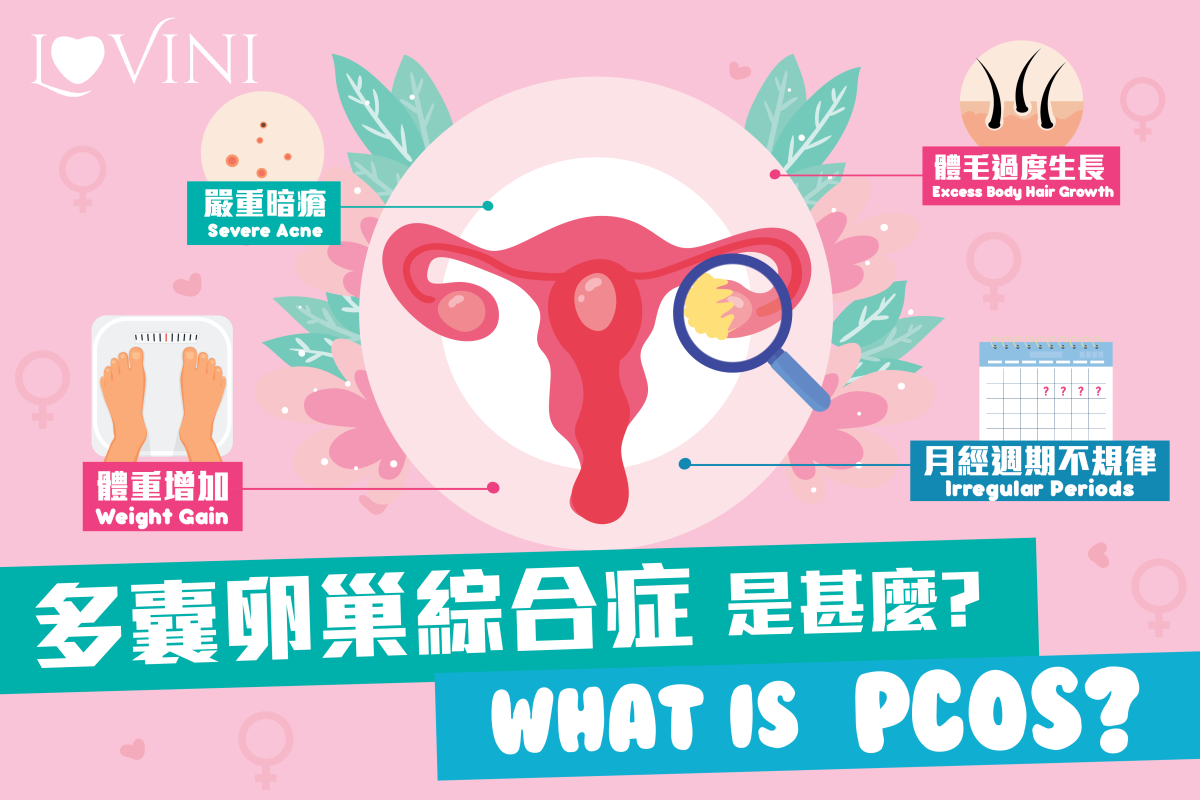Polycystic ovary syndrome (PCOS) is a syndrome caused by endocrine disorders. The abnormal hormone levels disrupt the normal function of the ovary. Symptoms of PCOS include irregular periods or no periods at all, difficulty getting pregnant, excessive body hair growth, weight gain, severe acne, and hair loss. Moreover, PCOS is also associated with an increased risk of developing type 2 diabetes, high cholesterol levels, and high blood pressure.
Causes and Risk Factors
Although the exact cause of PCOS is unknown, it is thought to be related to genetics, high level of androgen hormones, or insulin resistance.
Insulin is a hormone that controls blood sugar levels. Studies stated that some PCOS patients have insulin resistance – therefore the body’s cells don’t respond well to insulin, then the body will compensate by secreting more insulin. Since excessive insulin can cause the overproduction of male hormones, which may lead to abnormal hormone levels and thus cause ovarian failure.
In addition, being overweight or obese can also increase the amount of insulin. Studies have shown that losing 5% of body weight can improve hormonal imbalances, insulin resistance, menstruation, fertility and inflammation.
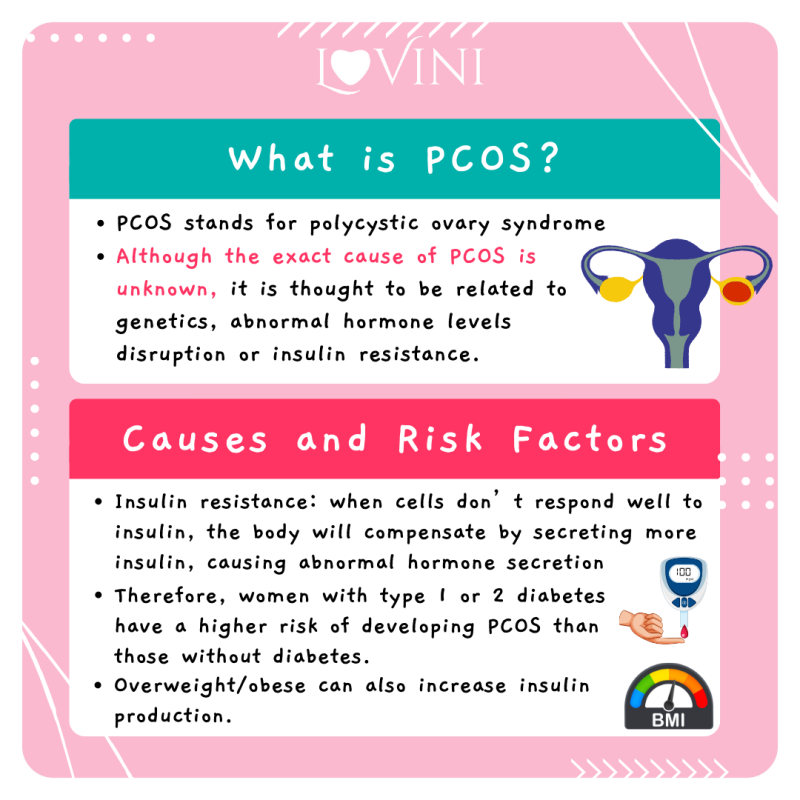
Clinical Symptoms
Excessive male hormones
- Excessive body hair growth – usually on the face, chest, back or buttocks
- Severe acne
- Oily skin
- Hair loss
Abnormal ovulation function
- Irregular periods
- No periods
- Difficulty getting pregnant
Polycystic ovaries
- Ovaries become enlarged and contain fluid-filled sacs that surround the eggs
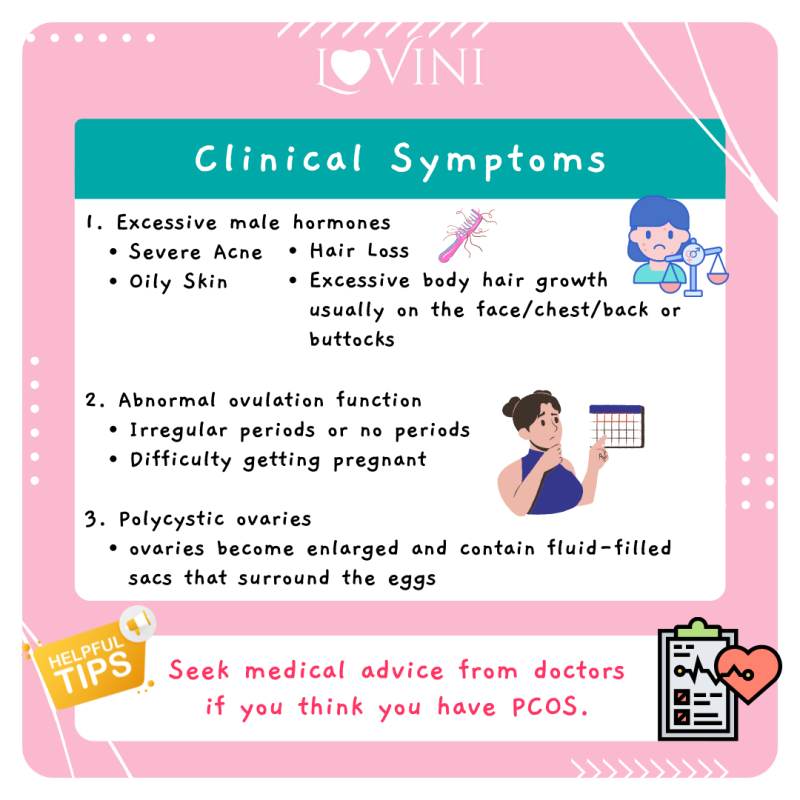
If you have at least 2 of these symptoms, you may be diagnosed with PCOS. It is suggested to seek medical advice from doctors for further investigation and diagnosis.
Diet and Lifestyle Habits
There is currently no cure for PCOS, but diet and lifestyle changes and maintaining a healthy weight can help prevent and improve symptoms of PCOS, as well as reduce metabolic risk.
1. Low Glycemic Index (GI): Many studies have stated that a low GI diet can reduce insulin resistance compared to a high GI diet. It is recommended to replace the high GI foods with low GI, such as changing white rice to brown rice, white bread to whole wheat bread, etc.
2. High-fibre diet: It helps reducing insulin resistance and reduce the risk of diabetes. Dietary fibre can also help you feel full for longer, thereby helping to control food intake and maintain a healthy weight. In addition, adding fibre-rich vegetables or mushrooms to a meal can also reduce the GI of the whole meal, such as adding chopped vegetables to rice, fungus, mushrooms, etc.
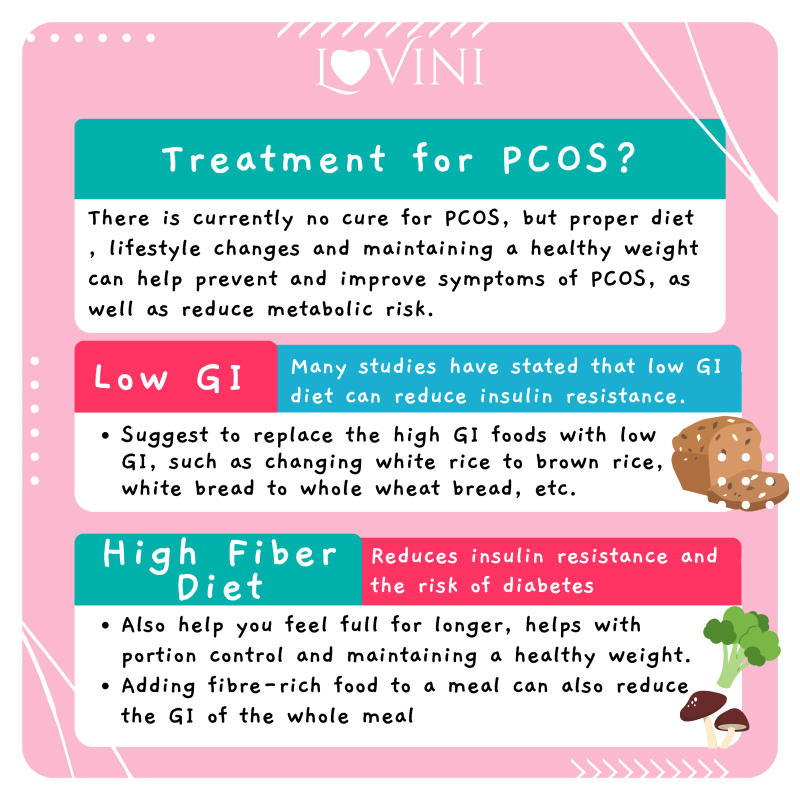
3. Good Fats: Because PCOS patients have low-grade chronic inflammation, including good fats in the diet may help reduce inflammation. Good fats can be found in avocados, flaxseeds, fatty fish such as salmon and mackerel, and nuts such as walnuts and almonds.
4. Regular Exercise: According to the recommendation of the World Health Organization, adults aged 18 or above are advised to perform at least 150 minutes of moderate-intensity aerobic physical activity or at least 75 minutes of vigorous aerobic physical activity every week to help reduce the risk of developing chronic diseases and helps in maintaining healthy body weight. Moreover, studies have shown that regular exercise combined with a low GI diet is more effective in decreasing insulin resistance.
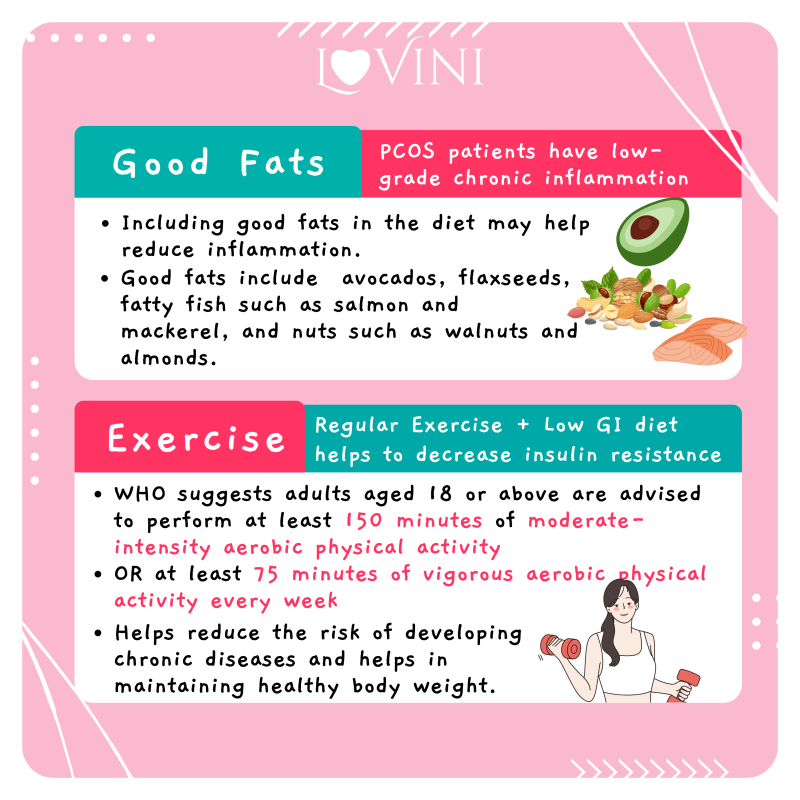
References:
Aboeldalyl, Shaimaa et al. “The Role of Chronic Inflammation in Polycystic Ovarian Syndrome-A Systematic Review and Meta-Analysis.” International journal of molecular sciences vol. 22,5 2734. 8 Mar. 2021, doi:10.3390/ijms22052734
Sacks, Frank M et al. “Effects of high vs low glycemic index of dietary carbohydrate on cardiovascular disease risk factors and insulin sensitivity: the OmniCarb randomized clinical trial.” JAMA vol. 312,23 (2014): 2531-41. doi:10.1001/jama.2014.16658
Sirmans, Susan M, and Kristen A Pate. “Epidemiology, diagnosis, and management of polycystic ovary syndrome.” Clinical epidemiology vol. 6 1-13. 18 Dec. 2013, doi:10.2147/CLEP.S37559
Solomon, Thomas Pj et al. “A low-glycemic index diet combined with exercise reduces insulin resistance, postprandial hyperinsulinemia, and glucose-dependent insulinotropic polypeptide responses in obese, prediabetic humans.” The American journal of clinical nutrition vol. 92,6 (2010): 1359-68. doi:10.3945/ajcn.2010.29771
Weickert, Martin O, and Andreas F H Pfeiffer. “Impact of Dietary Fiber Consumption on Insulin Resistance and the Prevention of Type 2 Diabetes.” The Journal of nutrition vol. 148,1 (2018): 7-12. doi:10.1093/jn/nxx008
World Health Organization, “Physical activity”. (2020). who.int/news-room/fact-sheets/detail/physical-activity#:~:text=should%20do%20at%20least%20an,least%203%20days%20a%20week.

